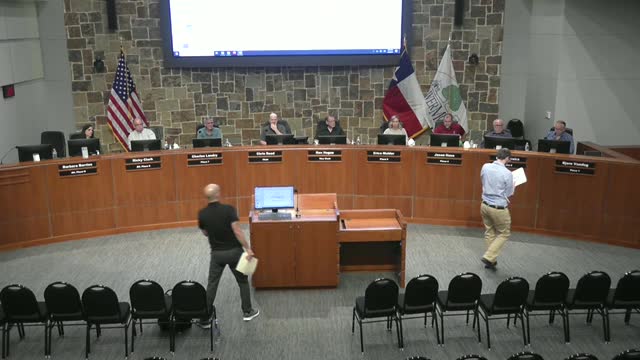Residents protest new streetlight proposal at Palermo Trail in Flower Mound
April 08, 2025 | Flower Mound, Denton County, Texas
Thanks to Scribe from Workplace AI , all articles about Texas are free for you to enjoy throughout 2025!

This article was created by AI using a video recording of the meeting. It summarizes the key points discussed, but for full details and context, please refer to the video of the full meeting. Link to Full Meeting
David Kumar, a resident directly affected by the proposed light, passionately protested its installation, arguing that the surrounding community had not been adequately informed. He highlighted a lack of direct communication from the Homeowners Association (HOA), noting that only two brief newsletters had been sent out over the past 15 months, with no formal survey or vote conducted among residents. Kumar expressed concern that the new lights would detract from the aesthetic appeal of their homes and argued that existing lighting already provided sufficient safety for the neighborhood.

Before you scroll further...
Get access to the words and decisions of your elected officials for free!
Subscribe for FreeKumar presented a petition signed by six residents, five of whom opposed the light, emphasizing that the community had not been properly consulted. He described the proposed lights as significantly taller and brighter than previous installations, which he believed would intrude on the privacy of his home and those of his neighbors.
In response, Michael Navari, a board member and former president of the HOA, defended the decision to install the lights, stating that they were chosen in collaboration with the city to enhance safety in the area. He acknowledged Kumar's concerns but emphasized the community's need for improved lighting, particularly for residents who walk in the evenings. Navari pointed out that the HOA had made efforts to communicate with residents through newsletters and town hall meetings, asserting that the community had largely welcomed the initiative.
Another resident, Donald Dawson, echoed support for the streetlights, citing feedback from neighbors who felt safer with additional lighting. He noted that many residents had expressed their approval of the project, highlighting the importance of community safety over individual preferences.
As the meeting progressed, the commissioners deliberated on the matter, weighing the concerns of those opposed to the light against the perceived benefits for community safety. The discussion underscored the ongoing challenge of balancing individual homeowner preferences with the collective needs of the community, leaving residents eager for a resolution that respects both safety and aesthetics.
The outcome of this debate will likely shape future communication strategies within the HOA and influence how community projects are approached, ensuring that all voices are heard in the decision-making process.
Converted from Flower Mound - Transportation Commission - Apr 08, 2025 meeting on April 08, 2025
Link to Full Meeting
Comments
View full meeting
This article is based on a recent meeting—watch the full video and explore the complete transcript for deeper insights into the discussion.
View full meeting




